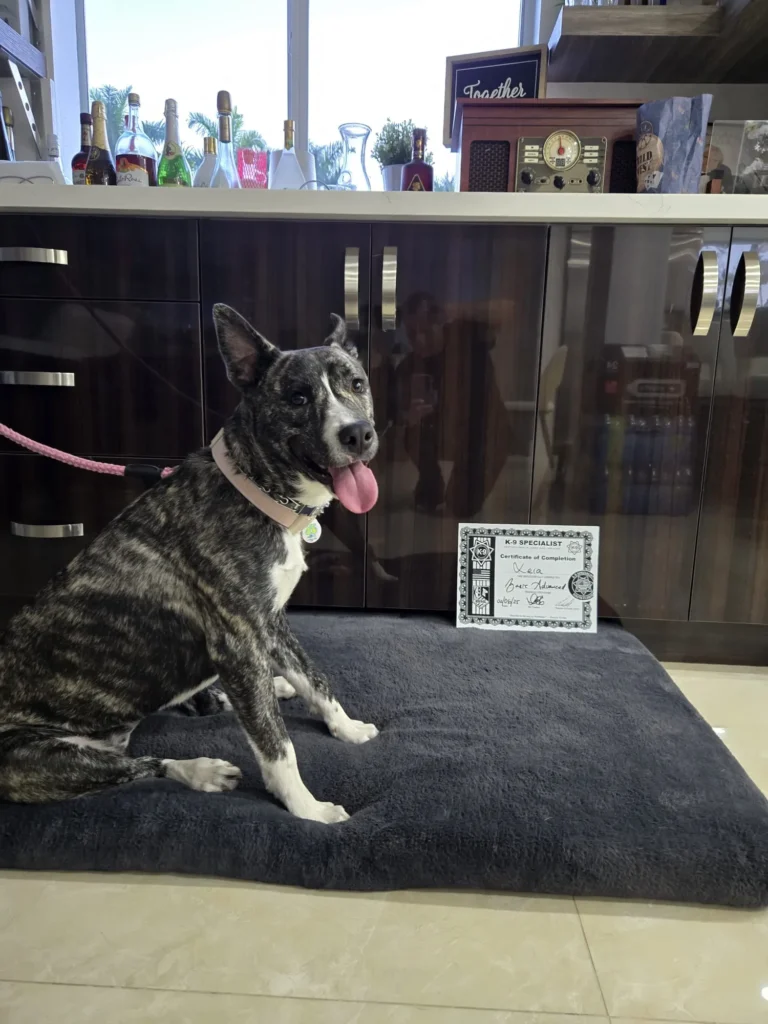Behavior Modification for Aggressive Dogs

Aggression in dogs can be alarming—and heartbreaking. Whether it’s growling at strangers, snapping at guests, or reacting poorly to other dogs, aggressive behavior affects your dog’s safety, your peace of mind, and your relationship with your pet.
But aggression doesn’t have to define your dog’s future.
Through professional canine behavior modification, even reactive or fearful dogs can learn new patterns of behavior, regain calmness, and reestablish trust with their environment and handler. In this guide, we’ll explore what dog behavior modification really is, what causes aggression, and how to find the right program to help your dog thrive again.
What Is Canine Behavior Modification?
Canine behavior modification is not the same as obedience training.
While obedience focuses on commands like sit, stay, and heel, behavior modification dog training is about changing how a dog emotionally responds to triggers—especially those that cause aggression, fear, or anxiety.
Rather than teaching surface-level control, dog behavior modification programs address the underlying causes of aggression using targeted techniques such as:
Desensitization (gradual exposure to triggers)
Counter-conditioning (replacing fear with positive associations)
Redirection (teaching alternate responses)
Threshold management (working below the dog’s stress point)
The goal is not to suppress aggression with punishment—but to change how the dog perceives and reacts to stressful or triggering situations.
Common Signs Your Dog Needs Behavior Modification
Aggression can take many forms. It may be subtle or sudden, constant or situational. If your dog displays any of the following behaviors regularly, it may be time to consider professional dog behavior modification training:
Growling or snapping at people or other animals
Lunging on walks or barking uncontrollably
Resource guarding (toys, food, people)
Redirected aggression (lashing out unpredictably)
Fear-based responses to loud noises or unfamiliar people
Intense reactivity in specific situations (doorbells, skateboards, etc.)
Difficulty calming down after being triggered
These are not “bad dogs”—they are dogs struggling with emotional regulation. The right behavior modification techniques for dogs can help rebuild emotional stability and teach safer responses.
What Causes Aggressive Behavior in Dogs?
Before we can address aggression, it’s important to understand where it comes from.
The most common causes include:
Fear or anxiety (from past trauma or lack of early socialization)
Territorial behavior (guarding home, family, or possessions)
Lack of structure or leadership in the home
Unresolved frustration or overstimulation
Health or neurological conditions that alter temperament
Previous negative experiences (especially in rescues or shelter dogs)
In many cases, aggression is not about dominance—it’s a symptom of fear, confusion, or emotional overwhelm. That’s why punishment-based approaches often make things worse.
How Behavior Modification Programs Work at K-9 Specialist
At K-9 Specialist, dog behavior modification programs are customized based on each dog’s triggers, environment, and learning style.
Our trainers don’t just teach commands—they study patterns, reactions, and thresholds. From there, we build a practical, step-by-step plan to help your dog:
Regain emotional balance
Learn to disengage from stressors
Build new associations with formerly triggering events
Rebuild trust in their handler and environment
Every session is done at your dog’s pace—never pushing past comfort levels, and always prioritizing safety.
These programs are ideal for dogs who:
Have bitten or come close
Have been kicked out of group training classes
Cannot be walked safely in public
Are unpredictable or easily overstimulated
Behavior Modification Techniques for Dogs: What’s Used?
The most effective dog behavior modification techniques combine science-backed psychology with practical real-life application.
Some of the core techniques include:
Desensitization
Gradual, controlled exposure to a trigger in a way that does not cause the dog to overreact. Over time, this lowers the dog’s sensitivity.
Counter-Conditioning
Pairing the trigger with a positive reward to change the dog’s emotional response. For example, seeing another dog = treat instead of threat.
Impulse Control Building
Teaching the dog to pause, wait, or check in with the handler rather than reacting instinctively.
Engagement Training
Using focus-building games and drills to help the dog pay attention to the owner in distracting environments.
These strategies are layered and reinforced over multiple sessions—so that they become habits, not just rehearsed responses.
Is It Too Late to Change My Dog’s Behavior?
Absolutely not.
Dogs are highly adaptable, even later in life. With the right dog behavior modification training, aggressive or reactive dogs can learn to feel safe again, trust their handlers, and function confidently in public or around family.
Even if your dog has had past failures in training or has a long history of aggressive episodes, a structured modification plan led by experts can create lasting change.
Frequently Asked Questions
Can aggression in dogs be cured completely?
While no dog can be 100% predictable, many aggressive behaviors can be significantly reduced or eliminated with structured behavior modification.
Is behavior modification the same as obedience training?
No. Obedience focuses on commands; behavior modification changes emotional and behavioral responses to triggers.
Can I do behavior modification at home?
Some basic techniques can be used at home, but serious cases require the guidance of a professional trainer experienced in canine behavior modification.
How long does it take to see results?
Every dog is different. Some see improvement in a few weeks, while others require ongoing work over several months. Consistency is key.
Final Thoughts: There Is Hope for Aggressive Dogs
Aggression doesn’t mean your dog is bad. It means your dog needs help—and that help is available.
Through structured behavior modification dog training, experienced trainers can help your dog overcome fear, frustration, or reactivity and learn calmer, safer ways to live.
If your dog is showing signs of aggression or intense reactivity, don’t wait until it escalates. Reach out to a professional who specializes in dog behavior modification programs and start the journey toward a better, more balanced life for you and your dog.
